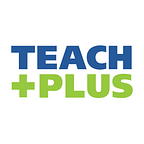We Need Data, Now More Than Ever.
By Brandi Sapp
Virtual. Hybrid. In-person four days a week. Virtual. In-person four days a week. In-person five days a week. My students and colleagues at Goshen Middle School in Northern Indiana have endured six transitions since the beginning of the school year in early August. And this is just our school.
In the past year, education has evolved more rapidly than it has in centuries. Teachers are relearning their jobs, students are adjusting to the various combinations of in-person and virtual learning, and parents are reeling from trying to keep up with it all. Last summer in Indiana, local school boards created unique COVID reopening plans customized to match their communities’ needs. While this allowed for districts to do what they needed to do, it also created a patchwork quilt of educational experiences for Hoosier children for the 2020–21 school year.
While Goshen experienced a roller coaster of a school year, our neighbors to the north in Elkhart have only had three transitions (hybrid to virtual to hybrid to in-person). To the south, Wa-Nee schools have changed just twice, starting the year fully in person, going virtual through the holidays, and returning in person since the first of the year.
With all this upheaval, how could it possibly be useful to give our annual state standardized assessment this year?
We need data now, more than ever. Soon, a new school year will begin — hopefully far more normal than this year. That is when the challenge will really begin. In the past, a teacher could be reasonably assured that his or her students had experienced a similar journey through their K-12 education. This is no longer the case. When we begin a new school year in August, we will welcome a more academically diverse group of students back into our schools than we have ever before.
Every teacher in my school will need to know exactly where our students ended this year to plan complex instruction that remediates and accelerates all at the same time — filling gaps and integrating the old and new learning. While this isn’t completely new to teachers, the scale of the task for the 2021–22 school year is enormous.
In fact, we have no idea exactly how big this task will be because we don’t have the data. Education has been like a slice of swiss cheese over the past year: full of holes, but not completely gone. We don’t just need to know how much learning was lost, but specifically what skills and knowledge. Which reading or math skills is a student missing? How much more writing practice does a student need before he or she is at grade level? While challenging, collecting this information now allows us to identify a starting point for strategically getting our students back on track.
Unsurprisingly, teachers are reluctant to get behind the state’s efforts to help them figure this out. Since its inception, statewide standardized testing data has also been used to hold teachers and schools accountable to state and national standards for school success. In Indiana, schools are assigned letter grades, and for many years, a teacher’s effectiveness was determined in part by using this data. This often makes the spring “testing season” stressful for students and teachers alike. And who needs more stress this year?
Typical accountability measures have no place in our planning this year, nor should they. Using letter grade systems and other methods to compare schools and hold them accountable to state and national standards during a pandemic is absurd and will only hamper the daunting task facing schools next year to get back on track. I applaud the Indiana General Assembly for considering a “null” grade which will eliminate the accountability baggage of standardized testing and let teachers focus on what’s really important: helping their students continue to grow despite the challenges of the pandemic year.
In fact, one silver lining from the pandemic could be that we discover that assessment can be helpful when it is administered without the threat of accountability. Only then will teachers be able to fully focus on using this crucial data to help our students have a bright future despite some of our darkest days. At Goshen Middle School, our teachers are overjoyed to have students back in the building five days a week despite the struggle and stress of the last few months. Things are starting to feel “normal” again. However, with that joy comes concern. What have our students lost? How will this past year impact their futures? Only assessment without the threat of accountability truly allows our teachers to use their expertise and to act on their concern for their students and help them succeed.
Brandi Sapp teaches language arts at Goshen Middle School in Goshen and is a 2020–21 Teach Plus Indiana Policy Fellow.
